Rob Bignell's Blog, page 349
December 24, 2013
Mimic sounds to appeal to sense of hearing
As appealing 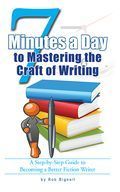 to a sense of hearing when writing, you may want to include the sound itself. For example, if describing the sounds of insect-like aliens in the distance as writing a science fiction novel, you might write something like The buzzing grew larger.
to a sense of hearing when writing, you may want to include the sound itself. For example, if describing the sounds of insect-like aliens in the distance as writing a science fiction novel, you might write something like The buzzing grew larger.
Buzzing is an example of onomatopoeia, or a word that imitates the sound it represents. Other examples of onomatopoeia include: clang, kerplunk, pow, purr, splash.
Using onomatopoeia creates “imitative harmony” in your story, enhancing the reader’s sense of being there, experiencing the events. To achieve this, you must ensure that the word accurately mimics the sound and doesn’t instead come off as campy.
Need an editor? Having your book, business document or academic paper proofread or edited before submitting it can prove invaluable. In an economic climate where you face heavy competition, your writing needs a second eye to give you the edge. I can provide that second eye.
Amazon.com Widgets
Related articles
 How long and frequent should author's blog be?
How long and frequent should author's blog be? Making sense of sensuous vs. sensual
Making sense of sensuous vs. sensual Shun beautiful writing done for beauty's sake
Shun beautiful writing done for beauty's sake
December 23, 2013
Five basic elements make up a story
What is 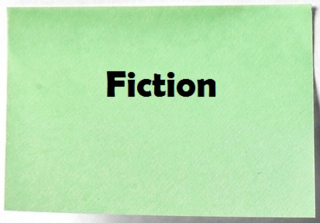 a story? An idea or a setting or a character alone do not make a story. A fictional story is all of those and more.
a story? An idea or a setting or a character alone do not make a story. A fictional story is all of those and more.
For the convenience of analysis and discussion, stories often are broken into parts. These parts typically are referred to as the five elements of fiction. They include:
g Plot – How the problem in the story is overcome, typically thought of as physical action
g Setting – Where and when this action occurs
g Character – Whoever attempts to solve the story’s problem as well as those who create the problem and those that appear incidentally
g Point of view – Perspective from which the story is narrated
g Theme – Purpose for which a story is told
It’s easy to think of the five elements of fiction as a matter of the 5 W’s and 1 H, or what, where, when who, why and how. Plot is what happens in the story. Setting is where and when the story happens. Character is who the story happens to. Point of view is how the story happens to be told. Theme is why the story happened to be told, or its message.
Each of these elements appears naturally in the story, whether you consciously intend them to or not. Consider the “Star Trek: The Next Generation” episode “The Best of Both Worlds”. The plot is about stopping a Borg invasion of the Federation. The setting is the 24th century (various stardates are given) in various star systems and aboard the starship enterprise and the invading Borg cube. The characters are the Enterprise’s crew, particularly Captain Jean-Luc Picard, Commander Will Riker and Lt. Cmdr. Shelby. The point of view largely is from an outside perspective, as if we were aboard the Enterprise. The theme is that individuality and self-determination triumphs over collectivism.
Virtually all of the problems with poorly written stories are that one or more of these elements are in some way muddled. In addition, you may perfectly nail each of these five elements but still tell the story poorly because it lacks flair; such problems are a matter of style, which is a part of understanding the craft of writing though not an element of fiction itself.
Need an editor? Having your book, business document or academic paper proofread or edited before submitting it can prove invaluable. In an economic climate where you face heavy competition, your writing needs a second eye to give you the edge. I can provide that second eye.
Amazon.com Widgets
Related articles
 Use broad conflict to set your story in motion
Use broad conflict to set your story in motion Make science fiction 'others' relevant to readers
Make science fiction 'others' relevant to readers Avoid shifting point of view in your story
Avoid shifting point of view in your story
December 22, 2013
Five Great Quotations about Why We Must Write
“Why do 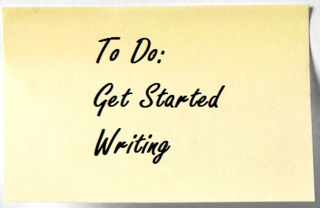 writers write? Because it isn't there.” – Thomas Berger
writers write? Because it isn't there.” – Thomas Berger
“All writers are vain, selfish and lazy, and at the very bottom of their motives lies a mystery. Writing a book is a long, exhausting struggle, like a long bout of some painful illness. One would never undertake such a thing if one were not driven by some demon whom one can neither resist nor understand.” – George Orwell
“One hasn’t become a writer until one has distilled writing into a habit, and that habit has been forced into an obsession. Writing has to be an obsession. It has to be something as organic, physiological and psychological as speaking or sleeping or eating.” – Niyi Osundare
“Writing is its own reward.” – Henry Miller
“We do not write because we want to; we write because we have to.” – Somerset Maugham
Need an editor? Having your book, business document or academic paper proofread or edited before submitting it can prove invaluable. In an economic climate where you face heavy competition, your writing needs a second eye to give you the edge. I can provide that second eye.
Related articles
 What is a writer's 'natural' temperament?
What is a writer's 'natural' temperament? Get ideas from you head onto paper
Get ideas from you head onto paper Avoid using weak pushbutton words in story
Avoid using weak pushbutton words in story Delete bogus alternatives from your story
Delete bogus alternatives from your story Concrete advice on literally vs. figuratively
Concrete advice on literally vs. figuratively
December 21, 2013
How to come up with an awesome story title
Selecting a 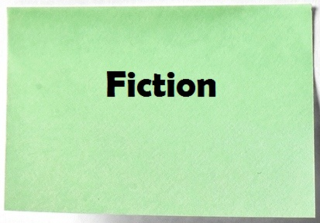 title marks one of the most important decisions you’ll make about your story. The title blares across a novel’s cover and is listed in a magazine’s table of contents. For science fiction readers, those few words hint at the story’s meme (or subgenre, such as alien invasion, space exploration, time travel); some readers prefer certain memes over others and will pass over a story (or give it a try) simply because of the subject matter your title suggests.
title marks one of the most important decisions you’ll make about your story. The title blares across a novel’s cover and is listed in a magazine’s table of contents. For science fiction readers, those few words hint at the story’s meme (or subgenre, such as alien invasion, space exploration, time travel); some readers prefer certain memes over others and will pass over a story (or give it a try) simply because of the subject matter your title suggests.
The great problem facing writers then is to come up with a catchy – and memorable – title. There are a number of approaches authors take in selecting titles. For one short story I published, I could have used a number of different titles than the one I selected (which was “All or Nothing”):
g Characters – “Nevar,” as she is the story’s main character
g Attributes of characters – “Finding Solace,” for Nevar struggles the entire story with an inner conflict, and peace of mind will not be found until she resolves it
g Real objects – “The Craft of the T’sohg Family,” as Nevar flies a specially designed spaceship, designed by her father, which is where much of the story’s action occurs
g Conceptual objects – “The Sepulcher”; a sepulcher is a hole cut in a cave where the dead are laid to rest, a term used to describe the black hole, where Nevar certainly will die if she enters it.
g Events – “The Race,” as the entire story centers on an annual tournament near a black hole
g Places – “The Black Hole,” as the story focuses on whether or not Nevar will enter it or not
g Times – “Nevar’s Last Race,” for she either will win and die or, based on her choice, will lose and never race again.
g Themes – “All or Nothing,” for Nevar finds she must go for broke to find inner peace.
g Line from text – “Evil Mouth Inhaling the Entire Universe,” as this describes the black hole and the forces that compel Nevar to do what she doesn’t believe in. A line from the story’s text also is known as a “gobbet title.”
g Twist titles – “Separation from Grace,” for by winning the race, Nevar would achieve “unity with grace,” a religious concept some readers would recognize.
Sometimes authors start with the title and build the story around it. This is called a reverse gobbet. James Tiptree Jr.’s novel “Brightness Falls from the Air” is an example of a reverse gobbet, with the title originally appearing as a phrase in a poem by Elizabethan Thomas Nashe (Well, sort of – it’s a misread line.). The reverse gobbet may seem like an odd way to write a story, but sometimes a single evocative phrase can rouse the muse.
Given the many different ways of coming up with a story title – using a character’s name, taking a line from the text, or drawing from a conceptual object in the story, to name a few – just about any word or phrase would seem to serve as an adequate appellation.
Not so. In fact, you want to avoid writing an “adequate” title. You want something that stands out, something that grabs your readers, something that makes them wonder what the story is about and proceed to page one. After all, what is “A Clockwork Orange” and who is the “Lord of the Flies”?
To avoid creating an adequate (or even a godawful) title, don’t use titles that are:
g Unpronounceable – Readers like to talk to one another about what they’ve read. But it’s difficult to talk about something that they can’t pronounce. After all, they might want to ask a bookstore clerk if that title is in stock.
g Embarrassing to say – Ditto.
g Difficult for others to spell – A number of book sales today are made online. But if your reader can’t spell the title at Amazon.com or in a search engine, your book may not be found. (Of course, “Fahrenheit 451” is one of those pre-Internet titles that is difficult to spell – almost no one knows how to spell “Fahrenheit.” But the word is common enough that you shouldn’t let readers’ ignorance rob you of a truly memorable and apt title.).
g Difficult to remember – If readers can’t even remember the title, forget about them asking a bookseller or search engine to find it.
g Forgettable – Ditto.
Need an editor? Having your book, business document or academic paper proofread or edited before submitting it can prove invaluable. In an economic climate where you face heavy competition, your writing needs a second eye to give you the edge. I can provide that second eye.
Amazon.com Widgets
Related articles
 Limit number of key characters in story
Limit number of key characters in story
December 20, 2013
Tips to ensure a successful book reading/signing
The day has  finally arrived: Your first book reading and signing! No doubt your stomach is aflutter, not just with excitement but with a little apprehension. What if you mess up in the reading? What if you can’t think of what to say when someone answers a question? What if the crowd finds you boring and starts to leave?
finally arrived: Your first book reading and signing! No doubt your stomach is aflutter, not just with excitement but with a little apprehension. What if you mess up in the reading? What if you can’t think of what to say when someone answers a question? What if the crowd finds you boring and starts to leave?
Don’t worry. None of that is likely to happen at all. And with a little preparation, you can take the edge off these fears while decreasing the chances of something going wrong.
Some tips:
g Know what you’ll read – If doing a book reading, select in advance which passage you want to read. Practice reading it out loud a couple of times. You don’t have to memorize the text, just refamiliarize yourself with it. Make sure it doesn’t go any longer than 10-15 minutes (If reading a short story from an anthology, just go with a single story.).
g Think about questions in advance – Attend a few book readings by other authors and get a feel for what kind of questions your audience might ask. Then think of some answers to them. After you’ve done a few book readings, you’ll discover that the same questions keep getting asked.
g Dress appropriately – You don’t have to be dressed to the nines but look professional or at least match the part. For example, if you’ve written an outdoors book, show up in a nice pair of jeans and a button-down shirt; fishermen don’t wear a suit and tie when on the lake, after all.
g Stroll around until you feel at home – Get to the location where you’ll be reading and signing books a bit early. Walk around to get a feel for what the place is like. Familiarity breeds comfort.
g Win over the crowd – When answering questions, get involved in a conversation with the audience. They’ll sense that you care about them and will be more interested in you (and your book!).
g Bring books and pens – Take with you more books than you expect you’ll need (you don’t want to leave any fans disappointed). Sign a few copies in advance. Carry a couple of additional pens in case the ink runs out.
g Remain good humored – If you do misread a passage or use the wrong name, be self-deprecating and good natured about. It was an honest mistake, and so long as you don’t get defensive, your audience and host will overlook it and maybe share a laugh with you…and the latter is a good thing, by the way (But don’t deliberately make a mistake to get a laugh – it will appear inauthentic.).
Usually a book reading follows a simple format: Introductions by a host, a few introductory words by you, you reading your book aloud, an audience Q&A with you, and then the book signing. When done with the Q&A (because people will begin to leave after that), be sure to thank the audience for coming and the host for having you. When you get home, send the host a thank you letter. Your graciousness will be remembered the next time you have a book to promote.
Finally, don’t forget publicity before and after the event. Plug your book reading/signing with press releases sent to local media and posted on your website/blog/social media pages. Make sure the location hosting your book reading/signing has a placard or bulletin board plugging the event; if you have to create one for them, do so. After the event, send pictures of the reading/signing to local media and post them on your website/blog/social media pages.
Need an editor? Having your book, business document or academic paper proofread or edited before submitting it can prove invaluable. In an economic climate where you face heavy competition, your writing needs a second eye to give you the edge. I can provide that second eye.
Related articles
 Writers can blog about variety of topics
Writers can blog about variety of topics Does your book cover design matter for ebooks?
Does your book cover design matter for ebooks? Start your story with solid narrative hook
Start your story with solid narrative hook Tweet your book to popularity
Tweet your book to popularity How to drive traffic to your website
How to drive traffic to your website
December 19, 2013
Create book sell sheet for pitching book
Before attempting  to convince a retailer to carry your book, you may want to create a book sell sheet (also called a "book one-sheet"). A book sell sheet provides quick facts to retailers aiming to convince them to carry and sell your books.
to convince a retailer to carry your book, you may want to create a book sell sheet (also called a "book one-sheet"). A book sell sheet provides quick facts to retailers aiming to convince them to carry and sell your books.
You’ll find this is useful to include if when introducing yourself to retailers (either via email or in person) or as a cheat-sheet for you to follow when speaking to them on the phone. It adds an aura of professionalism to you and your book.
In a single 8.5 x 11 page, the sell sheet provides the following info about your book, including:
g Book’s title
g Why book is appropriate for retailer to carry
g Synopsis of book
g What reviewers say about book
g Marketing plan for book
g Brief author's bio (focusing on why author is qualified to write this book)
g Where book is available for purchase
You'll also want to include a picture of the book’s front cover and a bullet point list of information that appears on your Amazon.com page: title, author, ISBN, format, size, publication date, pages, list price, and book's audience.
Assembling this information isn’t just a good idea for pitching your book to retailers but for your other promotional efforts. It can be molded into a press release or be sent to media to get them interested in your book.
Of course, you may need to revise the sell sheet slightly depending on which retailer you pitch the book to. For example, if you’ve written a book about education, a teacher supply store in a large city a few hours away from where you live may want to sell it because they carry a large number of books about that topic, while your hometown mom and pop bookstore may carry it only because you’re a local author.
Need an editor? Having your book, business document or academic paper proofread or edited before submitting it can prove invaluable. In an economic climate where you face heavy competition, your writing needs a second eye to give you the edge. I can provide that second eye.
Amazon.com Widgets
Related articles
 How long and frequent should author's blog be?
How long and frequent should author's blog be? Why you want an LCCN for your book
Why you want an LCCN for your book
December 18, 2013
Avoid using ALL CAPS in your writing
When trying  to show that a character is speaking louder than before or to emphasize a point, writers sometimes capitalize each letter of a word, creating what is typographically known as ALL CAPS. For example: Tinker balled his fists. “Quit BULLYING me!”
to show that a character is speaking louder than before or to emphasize a point, writers sometimes capitalize each letter of a word, creating what is typographically known as ALL CAPS. For example: Tinker balled his fists. “Quit BULLYING me!”
The writer may want to reconsider capitalizing all of those letters, however.
Ideally, you wouldn't need to use ALL CAPs at all. The context alone should be enough to suggest that the character is shouting or angry. Indeed, in the above example, the character balled his fists, showing that he’s upset. In addition, the exclamation point indicates he’s hollering.
There is a time to change the typography or font that’s used, and that’s to emphasize how a word is spoken. You might italicize a word to show that a character is speaking under his breath and doesn’t intend to be heard. ALL CAPS would show a rise in the volume (that is, a shout) when it’s not expected from the character.
Such a typographical change ought to be used rarely, though, or its effectiveness diminishes. In many ways, overusing ALL CAPS is like using the same word over and over – it’s not particularly creative and eventually the repetition is annoying.
ALL CAPS actually may make reading you story more difficult. A 1955 study found that ALL CAPS text slowed reading speed by 9.5 percent over a five-minute period. In any case, since many established writers rarely use ALL CAPS, for some readers overuse of it can give your writing an amateurish feel, and that’s not the impression you want to give.
Need an editor? Having your book, business document or academic paper proofread or edited before submitting it can prove invaluable. In an economic climate where you face heavy competition, your writing needs a second eye to give you the edge. I can provide that second eye.
Related articles
 How do you know when your book is done?
How do you know when your book is done? Avoid using weak pushbutton words in story
Avoid using weak pushbutton words in story Limit number of key characters in story
Limit number of key characters in story Five Great Quotations about Characters
Five Great Quotations about Characters
December 17, 2013
Delete nulls from your novel, short story
Sometimes the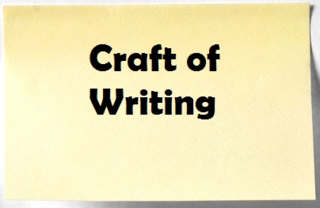 only purpose of a story’s sentence is to say that nothing happened. Such sentences are called “nulls”. An example would be the sentence “He said nothing.” Fortunately, nulls are easy to spot: If your story were occurring in real life, nulls would be the points where nothing happens.
only purpose of a story’s sentence is to say that nothing happened. Such sentences are called “nulls”. An example would be the sentence “He said nothing.” Fortunately, nulls are easy to spot: If your story were occurring in real life, nulls would be the points where nothing happens.
Nulls can be deleted from the story. They almost always reduce the piece’s immediacy and dramatic tension.
Need an editor? Having your book, business document or academic paper proofread or edited before submitting it can prove invaluable. In an economic climate where you face heavy competition, your writing needs a second eye to give you the edge. I can provide that second eye.
Related articles
 Get ideas from you head onto paper
Get ideas from you head onto paper Outline your scene when stuck on what to write
Outline your scene when stuck on what to write Write a great narrative hook for your story
Write a great narrative hook for your story Avoid using weak pushbutton words in story
Avoid using weak pushbutton words in story Limit number of key characters in story
Limit number of key characters in story
December 16, 2013
Ways to break story structure in your novel
Most novels, 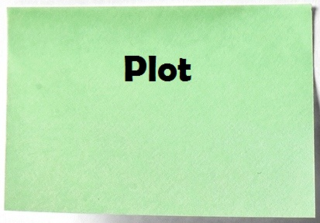 short stories and screenplays today follow a traditional five-part story structure, involving an introduction-rising action-climax-falling action-denouement. While dominant, this isn’t the only form you have to follow as a writer. Indeed, some of the best stories and novels don’t.
short stories and screenplays today follow a traditional five-part story structure, involving an introduction-rising action-climax-falling action-denouement. While dominant, this isn’t the only form you have to follow as a writer. Indeed, some of the best stories and novels don’t.
Be cautious about falling for gimmicks that claim to be “alternatives.”
The monomyth, also known as a quest, is one of the few true alternatives to the traditional five-part story structure. Most myths and epic tales follow this structure, which record the adventure and growth of a hero by taking him through specific stages. In modern literature, it’s perhaps best used in “The Lord of the Rings” series. Still, often in modern storytelling each portion of the monomyth follows the traditional five-part story structure in miniature.
Indeed, most “alternatives” to storytelling today are less alternatives than twists on the five-part traditional story structure. Such forms include:
g Episodic – This type of novel consists of several self-contained stories that when combined lead the main character on a journey. Each chapter or a group of two or three chapters may form a single episode; a good example is “The Adventures of Huckleberry Finn.” As with the monomyth, usually each episode follows the traditional five-part story structure, and the story arc itself tends to follow the five-part story structure.
g Diary – This structure typically breaks up the traditional five-part story structure into dates, as if you were reading someone’s actually diary. “Flowers for Algernon” is an excellent example. This format is more of an alternative way of presenting scenes and structuring chapters, however.
g Fate plot – Sometimes the author places the climax at the story’s beginning. The rest of story is a traditional five-part story structure that essentially is a flashback showing and explaining how the climax was reached. Once the story arrives at the climax, it often is skimmed over (as the reader already knows what will happen), and the story enters the falling action/denouement.
g Zipper story – This story includes two (or more) alternating strands, with one usually as a subplot. The strands appear to have nothing in common, but with each new scene, their relationship becomes more evident until they connect in some way at the story’s climax. A good example of this Fredrick Pohl’s novel “Gateway.” Each strand, however, follows a five-part story structure with their intersection at the climax. A twist on this is that the subplot is an analogy for the main storyline with the intersection at the story’s conclusion; many episodes of “Star Trek: The Next Generation” aptly do this.
Don’t be fooled by a lot of new books out there that claim they offer alternative story structures. Larry Brooks’ Story Engineering and Blake Snyder’s Save the Cat are among the more popular ones among them. Brooks and Snyder offer excellent advice, but they really just describe formulaic variations on the classic five-part structure of a story (such as the length of each of each part of the five-part story structure and the specific number of rising action scenes), and in the latter case, it’s geared toward screenwriting rather than novels and short stories.
Need an editor? Having your book, business document or academic paper proofread or edited before submitting it can prove invaluable. In an economic climate where you face heavy competition, your writing needs a second eye to give you the edge. I can provide that second eye.
Amazon.com Widgets
Related articles
 When should you start a new novel chapter?
When should you start a new novel chapter? Use broad conflict to set your story in motion
Use broad conflict to set your story in motion Avoid shifting point of view in your story
Avoid shifting point of view in your story
December 15, 2013
Five Great Quotations about Business of Writing
“Any man 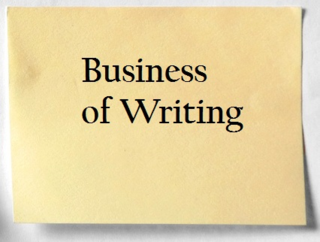 who keeps working is not a failure. He may not be a great writer, but if he applies the old-fashioned virtues of hard, constant labor, he'll eventually make some kind of career for himself as writer.” – Ray Bradbury
who keeps working is not a failure. He may not be a great writer, but if he applies the old-fashioned virtues of hard, constant labor, he'll eventually make some kind of career for himself as writer.” – Ray Bradbury
“Publishing is a business. Writing may be art, but publishing, when all is said and done, comes down to dollars.” – Nicholas Sparks
“The only thing I was fit for was to be a writer, and this notion rested solely on my suspicion that I would never be fit for real work, and that writing didn't require any.” – Russell Baker
“You learn by writing short stories. Keep writing short stories. The money’s in novels, but writing short stories keeps your writing lean and pointed.” – Larry Niven
“A writer should say to himself, not ‘How can I get more money?’ but ‘How can I reach more readers without lowering standards?’” – Brian Aldiss
Need an editor? Having your book, business document or academic paper proofread or edited before submitting it can prove invaluable. In an economic climate where you face heavy competition, your writing needs a second eye to give you the edge. I can provide that second eye.
Related articles
 Get ideas from you head onto paper
Get ideas from you head onto paper How to promote multiple books on your website
How to promote multiple books on your website Think of your story as if a stage production
Think of your story as if a stage production What is a writer's 'natural' temperament?
What is a writer's 'natural' temperament? Five great quotations about poetry
Five great quotations about poetry



